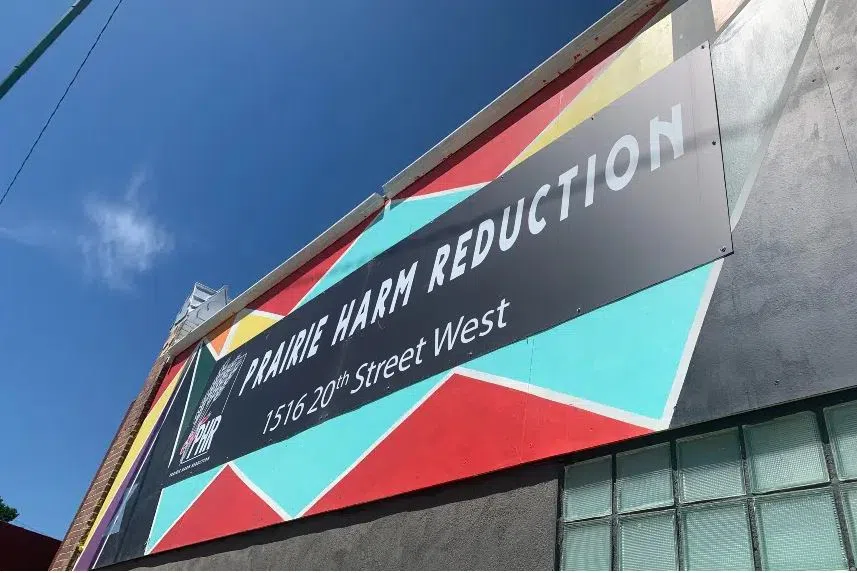Public health experts and safe consumption sites are sounding the alarm about the term “naloxone-resistant fentanyl.”
The RCMP and the Saskatoon and Moose Jaw police services all put out statements this week warning the public about what they called a “naloxone-resistant fentanyl” making the rounds.
Elaine Hyshka, an associate professor at the University of Alberta’s school of public health, said this just isn’t true.
“There’s no such thing as ‘naloxone-resistant opioids’ or ‘naloxone-resistant fentanyl,’ ” she said.
“I would guess this is likely a case where we’re seeing the fentanyl supply (mixed) with ‘benzos’ or another sedative and it may be taking longer to reverse those overdoses or that people are overdosing so quickly, they’re dying before medical intervention can be provided.
“It’s important for people to understand (that) in the event of an overdose, seconds matter. And you shouldn’t question whether naloxone will potentially be effective or not. You need to administer naloxone and do it right away.”
She explained that naloxone only reverses opioid overdoses, not other sedatives like benzodiazepine.
“In the event that someone was using opioids that were contaminated with another drug, the naloxone would still reverse the opioid part of the overdose and that’s really important because that is one way that you can help to restore breathing,” Hyshka explained.
Simply put, fentanyl is an opioid and naloxone is the antidote to opioids.
READ MORE:
- Regina police warn of dangerous new drug combination
- Fentanyl a common denominator in Saskatchewan’s drug-related deaths
- More locations offering take-home naloxone kits in Saskatchewan
She explained even with stronger fentanyl, naloxone should always be used in the event of a suspected overdose, even if it takes multiple doses to reverse the effects.
She thinks the wording used by the RCMP and police forces was harmful.
“I think it’s very important that we’re very clear with the general public that one of the best ways to prevent drug-poisoning deaths is for everybody to carry and be prepared to use naloxone, even in the event of somebody consuming an opioid that has been contaminated with something else like benzodiazepine or another sedative,” Hyshka said.
Hyshka thinks the wording used might make people think naloxone is not important to carry.
“It sends the message that you don’t really need to carry it or it’s not worth the effort to get a kit,” she said. “That is a very dangerous message considering that we’re in the midst of a deadly overdose crisis and naloxone is one of the best tools we have to save lives.”
She explained that while the naloxone reverses the overdose from fentanyl, the person who took the mixed drug may still be sedated by the sedative mixture. But at least the naloxone restored their breathing.
“You still need to use naloxone. It is the most effective strategy and obviously after or when you’re using naloxone, you also need to call 911 so you can get additional medical support,” said Hyshka.
After its initial release about the fentanyl, the RCMP issued a second statement standing by its warning.
“Investigators believe the fentanyl may be mixed with benzodiazepines and xylazine, which increases the risk of an overdose which can’t be reversed by the administration of naloxone,” the Mounties explained.
“We are unable to definitively comment on the composition of the fentanyl in question, as it remains under investigation.”
Hyshka thinks this situation is a perfect example of why public health officials should make statements about the risks and harms of illegal drugs and not the police.
“In the future, I hope prior to issuing press releases that have inaccurate information in them, that the police would consult with their local public health officials and issue a joint statement or ask the public health to issue a statement warning the public that contains accurate and life-saving information,” she said.
Kayla DeMong, the executive director at Prairie Harm Reduction in Saskatoon, said this new mixture of fentanyl is deadly.
“It’s incredibly scary what we’re seeing right now circulating,” DeMong said.
“It’s incredibly dangerous because we can’t treat the overdoses the way that we would hope to be able to support people who are having them. Since the naloxone only addresses the opioids within the substance, it has no effect on the benzodiazepines that we’re currently seeing (being mixed with the fentanyl).”
She agrees that the wording used by the RCMP and police is harmful.
“It definitely is dangerous to publicly say it’s resistant to naloxone without explaining further what the makeup of the (other) substances are and what is treated by the naloxone and what cannot be,” she said.
DeMong encourages everyone to still carry and use naloxone.
“It’s important because even though it can’t treat all of the substances, it is treating some of it and hopefully is helping keep people alive long enough for paramedics to come and start further treatment,” she said.











